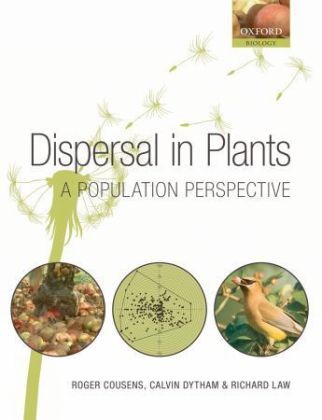Read more
Zusatztext Although the authors aimed this book at graduate students in plant ecology, plant scientists and ecologists, I recommened it to all weed scientists and agronomists as well. Informationen zum Autor Roger Cousens is a Professor in the School of Resource Management School, University of Melbourne, Australia. He has published for over 20 years on ecology and population dynamics of weeds (including dispersal), especially on methodology. He worked at the Weed Research Organisation and Long Ashton Research Station (UK) before moving to Australia in 1989; since then he has lectured at University of Sydney, headed the weed science department of Agriculture Western Australia, and been the Chair of Plant and Soil Science and head of School of Agricultural Science at La Trobe University. Since 1998 he has been professor and formerly head of the School of Resource Management at University of Melbourne. His current research is on dispersal, spatial pattern and population dynamics, from established agricultural weeds, to new plant invasions and endangered orchids. He also researches on the history of botanic gardens.Calvin Dytham is a Marie Curie More Senior Research Fellow at the University of Potsdam, Germany and a Senior Lecturer in Ecology at the University of York, UK. After completing a BSc in ecology and PhD from the University of Leeds, he took a postition at Imperial College, Silwood Park before returning to Leeds. He has been at the University of York since 1993 with a research fellowship in Potsdam 2006/7. His current research continues a long interest in the evolution of dispersal.Richard Law is a Professor in the Biology Department at the University of York. He obtained a BA from the Univeristy of York and a PhD from the University of Liverpool. He worked as a lecturer in Botany at Sheffield University and at the University of York, and as a guest scientist at the Forschungszentrum Julich Germany and that the Wissenschaftskolleg in Berlin. He has broad interests in ecological theory including plant community ecology and spatio-temporal processes in plant population dynamics. Klappentext This advanced textbook is the first to explore the consequences of plant dispersal for population and community dynamics! spatial patterns! and evolution. It successfully integrates a rapidly expanding body of theoretical and empirical research. The first comprehensive treatment of plant dispersal set within a population framework Examines both the processes and consequence of dispersal Spans the entire range of research! from natural history and collection of empirical data to modeling and evolutionary theory Provides a clear and simple explanation of mathematical concepts Dispersal in Plants is aimed principally at graduates interested in plant ecology! although given the strong current interests in invasive species and global change it will also be of interest and use to a broad audience of plant scientists and ecologists seeking an authoritative overview of this rapidly expanding field. Zusammenfassung This advanced textbook is the first to explore the consequences of plant dispersal for population and community dynamics, spatial patterns, and evolution. It successfully integrates a rapidly expanding body of theoretical and empirical research....

